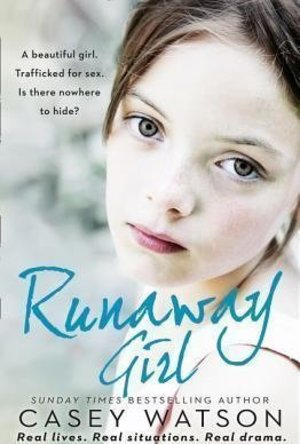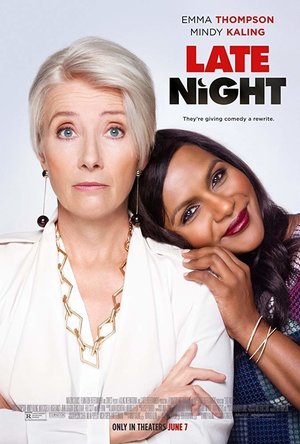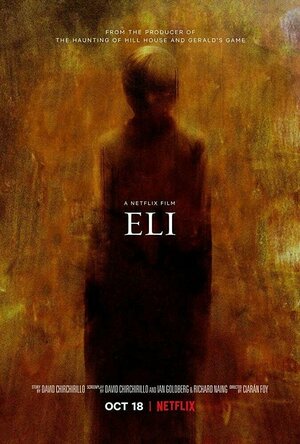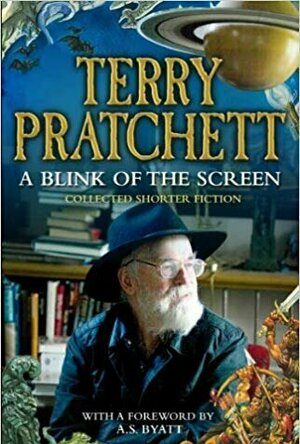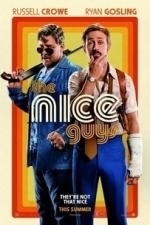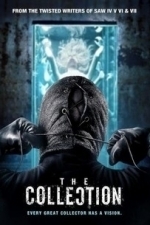Search
Search results
Hazel (1853 KP) rated Runaway Girl: A beautiful girl. Trafficked for sex. Is there nowhere to hide? in Books
Dec 14, 2018
<i>I received this book for free through Goodreads First Reads.</i>
Casey Watson is a specialist foster carer who temporarily houses vulnerable children in emergency situations. Since working in this field for decades, she has been documenting her experiences in a series of books, each one focusing on a different child. Her thirteenth, and most recent book is <i>Runaway Girl</i>, aptly named about a (supposedly) fourteen-year-old girl, running away from several distressing situations.
Adrianna arrives on Casey’s doorstep with no possessions, no English and no passport. Apart from knowing she is Polish, Adrianna is a complete mystery to the Watson family and the services involved. With her sixth sense tingling, Casey is certain there is something important that Adrianna is hiding and, despite all her attempts, it is not until an emergency hospitalization that the frightened Polish girl starts telling the truth.
With a background of abuse, homelessness and sex trafficking, Adrianna’s story will open readers’ eyes to the shocking situations many foreign children find themselves. Unfortunately, Adrianna is only one out of 5,000 girls in the last decade and a half to be brought to England illegally and forced into prostitution.
Fortunately, Adrianna is lucky to have escaped and found a safe place to stay in the Watson household. Without Casey’s care and determination to provide a future for her, Adrianna would have remained one of the “hidden children” that arrive in England every year.
Casey writes in a novel-like format, describing Adrianna’s circumstances from a carer’s point of view. Slowly revealing the secrets of Adrianna’s past, Casey keeps the reader interested in the same way a fiction author would with a clever plot line. Emphasising the difficulties Adrianna has, not only coming to terms with the abuse she has faced, but also worrying about whether authorities will allow her to remain in England, Casey appeals to the readers’ emotions, making it clear that, although here illegally, trafficked children have every right to be protected and looked after by British authorities.
Although Casey writes under a pseudonym, and assumedly alters all names within the book, it is not certain how much of the storyline is true, or whether the situation has been accentuated in order to capture the reader’s attention. This, however, is not important – people will read this for entertainment, therefore the accuracy of the content is not as significant as the way in which it is told. <i>Runaway Girl</i>, whilst shocking, is engaging and easy to read, with a satisfying ending.
<i>Runaway Girl</i> is the only book I have read from Casey Watson, yet I can tell she is a worthy and successful author. Her stories – at least the blurbs – seem similar to other authors, such as Torey Hayden, who also write about their experiences helping vulnerable children. Casey Watson’s book need not be read in any particular order; therefore <i>Runaway Girl</i> is as good a place as any to begin.
Casey Watson is a specialist foster carer who temporarily houses vulnerable children in emergency situations. Since working in this field for decades, she has been documenting her experiences in a series of books, each one focusing on a different child. Her thirteenth, and most recent book is <i>Runaway Girl</i>, aptly named about a (supposedly) fourteen-year-old girl, running away from several distressing situations.
Adrianna arrives on Casey’s doorstep with no possessions, no English and no passport. Apart from knowing she is Polish, Adrianna is a complete mystery to the Watson family and the services involved. With her sixth sense tingling, Casey is certain there is something important that Adrianna is hiding and, despite all her attempts, it is not until an emergency hospitalization that the frightened Polish girl starts telling the truth.
With a background of abuse, homelessness and sex trafficking, Adrianna’s story will open readers’ eyes to the shocking situations many foreign children find themselves. Unfortunately, Adrianna is only one out of 5,000 girls in the last decade and a half to be brought to England illegally and forced into prostitution.
Fortunately, Adrianna is lucky to have escaped and found a safe place to stay in the Watson household. Without Casey’s care and determination to provide a future for her, Adrianna would have remained one of the “hidden children” that arrive in England every year.
Casey writes in a novel-like format, describing Adrianna’s circumstances from a carer’s point of view. Slowly revealing the secrets of Adrianna’s past, Casey keeps the reader interested in the same way a fiction author would with a clever plot line. Emphasising the difficulties Adrianna has, not only coming to terms with the abuse she has faced, but also worrying about whether authorities will allow her to remain in England, Casey appeals to the readers’ emotions, making it clear that, although here illegally, trafficked children have every right to be protected and looked after by British authorities.
Although Casey writes under a pseudonym, and assumedly alters all names within the book, it is not certain how much of the storyline is true, or whether the situation has been accentuated in order to capture the reader’s attention. This, however, is not important – people will read this for entertainment, therefore the accuracy of the content is not as significant as the way in which it is told. <i>Runaway Girl</i>, whilst shocking, is engaging and easy to read, with a satisfying ending.
<i>Runaway Girl</i> is the only book I have read from Casey Watson, yet I can tell she is a worthy and successful author. Her stories – at least the blurbs – seem similar to other authors, such as Torey Hayden, who also write about their experiences helping vulnerable children. Casey Watson’s book need not be read in any particular order; therefore <i>Runaway Girl</i> is as good a place as any to begin.
Phillip McSween (751 KP) rated The Cook, the Thief, His Wife, and Her Lover (1989) in Movies
Jan 29, 2019
Intriguing Movie
A woman begins a torrid romance of infidelity and tries to keep it from her nefarious husband.
Acting: 10
There is a reason Helen Mirren is one of my favorite actresses. She can be vulnerable and powerful all in the same breath. She makes you sympathize with her character and champion for her to win. She plays Georgina, the wife of a thug. She hates her life and is longing for more. The way she expresses that longing is done in subtle fashion, yet you can feel exactly what she is feeling. There are a number of strong performances in the film, but none quite as strong as hers.
Beginning: 1
I couldn’t tell up from down when the movie started. I didn’t know what to think, who to hate, or who to root for. That all eventually became clear, but the beginning was very muddled and had me losing hope that the movie could be good. Good thing there’s more to this film than the first ten minutes.
Characters: 7
The title, of course, gives away the characters that dominate the story. Each character carries their own weight and adds a different value to the story. Outside of Georgina, I enjoyed watching Alan Howard act out his role of Michael the Lover. He has an air of ignorance with a touch of nobility. He’s a good guy that enjoys being alone, not realizing that he is looking for someone special in his life. That is, until he meets Georgina who turns his life upside down. The interactions between the two provide for a number of great scenes. And, no, I’m not just referring to the sex, although there are some steamy scenes.
Cinematography/Visuals: 10
Conflict: 8
Genre: 8
Definitely not the best drama I’ve seen, but hands-down, one of the most unique. I can honestly say I’ve never seen anything quite like this movie. It’s different for a lot of reasons, but mainly in the way the film is shot which helps push the overall tone. It shines with a special kind of flare that sticks in your memory.
Memorability: 8
Pace: 5
Plot: 10
Unique story with an interesting twist. I appreciate when movies try and do something different, and that’s where (insert long title here) succeeds. It’s a gut-wrenching love story told with conviction and passion.
Resolution: 10
Can’t talk about this movie without talking about that ending. Wow, what an ending! Didn’t see it coming in the least. It was both unbelievable and gratifying at the same time. If you haven’t heard of or seen this movie, I won’t ruin it for you. I’ll just say prepare to be pleasantly shocked.
Overall: 77
A stronger beginning and a quicker pace could have made this movie excellent, but it’s still solid enough for a one-time watch. I can guarantee you The Cook, the Thief, His Wife, and Her Lover will be unlike anything you’ve ever seen before.
Acting: 10
There is a reason Helen Mirren is one of my favorite actresses. She can be vulnerable and powerful all in the same breath. She makes you sympathize with her character and champion for her to win. She plays Georgina, the wife of a thug. She hates her life and is longing for more. The way she expresses that longing is done in subtle fashion, yet you can feel exactly what she is feeling. There are a number of strong performances in the film, but none quite as strong as hers.
Beginning: 1
I couldn’t tell up from down when the movie started. I didn’t know what to think, who to hate, or who to root for. That all eventually became clear, but the beginning was very muddled and had me losing hope that the movie could be good. Good thing there’s more to this film than the first ten minutes.
Characters: 7
The title, of course, gives away the characters that dominate the story. Each character carries their own weight and adds a different value to the story. Outside of Georgina, I enjoyed watching Alan Howard act out his role of Michael the Lover. He has an air of ignorance with a touch of nobility. He’s a good guy that enjoys being alone, not realizing that he is looking for someone special in his life. That is, until he meets Georgina who turns his life upside down. The interactions between the two provide for a number of great scenes. And, no, I’m not just referring to the sex, although there are some steamy scenes.
Cinematography/Visuals: 10
Conflict: 8
Genre: 8
Definitely not the best drama I’ve seen, but hands-down, one of the most unique. I can honestly say I’ve never seen anything quite like this movie. It’s different for a lot of reasons, but mainly in the way the film is shot which helps push the overall tone. It shines with a special kind of flare that sticks in your memory.
Memorability: 8
Pace: 5
Plot: 10
Unique story with an interesting twist. I appreciate when movies try and do something different, and that’s where (insert long title here) succeeds. It’s a gut-wrenching love story told with conviction and passion.
Resolution: 10
Can’t talk about this movie without talking about that ending. Wow, what an ending! Didn’t see it coming in the least. It was both unbelievable and gratifying at the same time. If you haven’t heard of or seen this movie, I won’t ruin it for you. I’ll just say prepare to be pleasantly shocked.
Overall: 77
A stronger beginning and a quicker pace could have made this movie excellent, but it’s still solid enough for a one-time watch. I can guarantee you The Cook, the Thief, His Wife, and Her Lover will be unlike anything you’ve ever seen before.
Emma @ The Movies (1786 KP) rated Late Night (2019) in Movies
Jun 22, 2019 (Updated Sep 25, 2019)
Show me Emma Thompson in a trailer and I'll show you a film that's going to the top of my must-see list. Comedy, drama, she can do it all, and as Katherine Newbury she got to do a bit of both.
Katherine is losing her TV show after years of being a late night icon. Where she wants serious and respectable guests, viewers tastes are edging ever closer to internet and pop culture celebs. She needs some fresh and relevant content, but the team is lacking fresh blood and the ideas just aren't coming.
Molly longs for a change of pace from working at the plants and she takes a chance and gets herself an opportunity to interview for the writing team. Pressured by Katherine to get results, Brad hires Molly to start on the entirely male team despite her less than popular when she takes the place of their recently fired colleague.
Mindy Kaling has done a great job on the script for Late Night, it's funny but still manages to transition to more serious moments. The characters all make great connections and Katherine and Molly are particularly fun together once Molly is able to break the tough shell of Katherine. The only slight quibble about it is that a couple of times I felt things didn't need to be there, but those scenes still worked well.
The story may be a new take, but it's a tale as old as time in this sort of comedy. It's predictable but in a way that you love because the chemistry on screen is so good and the outcome is genuinely what you want.
Emma Thompson on screen is a delight, there's even one point where we see her contemplating and she looks like a Jack Vettriano. The woman is a masterpiece. She can play anything (well, apart from a yeti, but that was more to do with the terrible scripting) and the role of Katherine really does come to life in her hands.
Kaling as Molly is a delight to see. Her always upbeat nature and genuine love for what she's doing shines through bringing a beautiful partnership out between her and Katherine.
The supporting cast is full of faces you'll recognise and all of them help this light-hearted comedy becomes something that genuinely made me smile.
Late Night was an unsurprising hit with me, when you have so many great things it's very difficult to create something bad.
What you should do
Have you looked at the news or Twitter today and sighed at just how depressing the world can be? If yes, go and see Late Night for a great mood lifter. If no, go and see Late Night for a great mood lifter.
Movie thing you wish you could take home
That suit Katherine wears right at the end of the movie... amazing.
Katherine is losing her TV show after years of being a late night icon. Where she wants serious and respectable guests, viewers tastes are edging ever closer to internet and pop culture celebs. She needs some fresh and relevant content, but the team is lacking fresh blood and the ideas just aren't coming.
Molly longs for a change of pace from working at the plants and she takes a chance and gets herself an opportunity to interview for the writing team. Pressured by Katherine to get results, Brad hires Molly to start on the entirely male team despite her less than popular when she takes the place of their recently fired colleague.
Mindy Kaling has done a great job on the script for Late Night, it's funny but still manages to transition to more serious moments. The characters all make great connections and Katherine and Molly are particularly fun together once Molly is able to break the tough shell of Katherine. The only slight quibble about it is that a couple of times I felt things didn't need to be there, but those scenes still worked well.
The story may be a new take, but it's a tale as old as time in this sort of comedy. It's predictable but in a way that you love because the chemistry on screen is so good and the outcome is genuinely what you want.
Emma Thompson on screen is a delight, there's even one point where we see her contemplating and she looks like a Jack Vettriano. The woman is a masterpiece. She can play anything (well, apart from a yeti, but that was more to do with the terrible scripting) and the role of Katherine really does come to life in her hands.
Kaling as Molly is a delight to see. Her always upbeat nature and genuine love for what she's doing shines through bringing a beautiful partnership out between her and Katherine.
The supporting cast is full of faces you'll recognise and all of them help this light-hearted comedy becomes something that genuinely made me smile.
Late Night was an unsurprising hit with me, when you have so many great things it's very difficult to create something bad.
What you should do
Have you looked at the news or Twitter today and sighed at just how depressing the world can be? If yes, go and see Late Night for a great mood lifter. If no, go and see Late Night for a great mood lifter.
Movie thing you wish you could take home
That suit Katherine wears right at the end of the movie... amazing.
Darren (1599 KP) rated Eli (2019) in Movies
Oct 24, 2019
Characters – Eli is the young boy with the auto-immune disease, he does suffer nightmares about what would happen if he was outside, he lives in a bubble, which is his only safety in life. He is going through an experimental procedure which is meant to cure him, only for him to start suffering haunting visions and attacks by ghosts, he must figure out if they are trying to harm him or help him before he reaches the latest procedure. Rose and Paul are the religious parents that have given up nearly everything to make their son’s life better, trying to remain strong for him throughout the events of the film. Dr Isabella Horn is the doctor that is trying to help Eli, only her methods don’t seem to get explained to the family, while they are left to just believe anything she says. Haley is a girl from the neighbourhood that visits Eli, hoping to find friendship, though she does know the fate of most of the people in the house.
Performances – Charlie Shotwell does a wonderful job in the leading role, suffering through medical procedures, hauntings and emotional problems with ease through the film. Kelly Reilly, Max Martini and Lili Taylor are all strong through the film, which we don’t see much away from Charlie from any of them. Sadie Sink is solid without having much to do, other than being a friend to talk too.
Story – The story here follows a young boy with a medical condition who gets taken to an experimental hospital for treatment, when he starts getting visits from ghosts, where he might learn the truth about the hospital. This is a story which does keep you on your toes, you will constantly be thrown through different sub-genres of horror and it is excellent to see how the film can keep you guessing and leave you surprised by the ending, because if anybody saw this coming, they would be a liar. This is a story where not learning too much going in is even better because it does start with what could be a routine horror, but will leave you shocked by the end.
Horror – The horror here does seem to jump through so many sub-genres of horror it is a joy to watch, because the transition is seamless throughout.
Settings – The film keeps most of the film inside the hospital, this is an excellent location for the film to be set, which sees everything unfold down the dark filled hallways.
Special Effects – The effects do come off well too with how everything happens, be it the ghostly figures or the more practical ones too.
Scene of the Movie – The ghosts in the mirror.
That Moment That Annoyed Me – The abusive people at the start of the film.
Final Thoughts – This is a horror that does truly keep you on your toes, it is great to see this too, we will get scares and surprises and you won’t believe how everything unfolds.
Overall: Surprising Throughout.
Performances – Charlie Shotwell does a wonderful job in the leading role, suffering through medical procedures, hauntings and emotional problems with ease through the film. Kelly Reilly, Max Martini and Lili Taylor are all strong through the film, which we don’t see much away from Charlie from any of them. Sadie Sink is solid without having much to do, other than being a friend to talk too.
Story – The story here follows a young boy with a medical condition who gets taken to an experimental hospital for treatment, when he starts getting visits from ghosts, where he might learn the truth about the hospital. This is a story which does keep you on your toes, you will constantly be thrown through different sub-genres of horror and it is excellent to see how the film can keep you guessing and leave you surprised by the ending, because if anybody saw this coming, they would be a liar. This is a story where not learning too much going in is even better because it does start with what could be a routine horror, but will leave you shocked by the end.
Horror – The horror here does seem to jump through so many sub-genres of horror it is a joy to watch, because the transition is seamless throughout.
Settings – The film keeps most of the film inside the hospital, this is an excellent location for the film to be set, which sees everything unfold down the dark filled hallways.
Special Effects – The effects do come off well too with how everything happens, be it the ghostly figures or the more practical ones too.
Scene of the Movie – The ghosts in the mirror.
That Moment That Annoyed Me – The abusive people at the start of the film.
Final Thoughts – This is a horror that does truly keep you on your toes, it is great to see this too, we will get scares and surprises and you won’t believe how everything unfolds.
Overall: Surprising Throughout.
Phil Leader (619 KP) rated A Blink of the Screen: Collected Shorter Fiction in Books
Nov 8, 2019
For someone who was as prolific at writing novels as Terry Pratchett he didn't write much in the way of short stories. As he himself comments in this collection of his work this is because 'they cost blood' to write and he wondered how others such as Neil Gaiman could write so many short stories. This is all the more surprising given his grounding in journalism, something that demands producing a story withing a set number of words.
The basis for this seems to be that the nugget of an idea behind a Pratchett book was rarely simple enough to be encapsulated neatly in the short story form; his characters and ideas took time to develop and that's before the addition of the amusing footnotes and his skill at producing pastiche, parody and satire of many different things without the narrative stumbling or swerving.
This collection shows that although relatively few in number, the Pratchett short story was just as fine as could be expected. Sometimes they could be a little rushed to get to the point before the end (best seen in his tale of a gnome from the country that finds other gnomes in a department store - the story that was later rewritten fully as Truckers)
This is also a somewhat eclectic mix. There is the first story that he was paid for about the devil wanting to promote hell, which he wrote at school but it is clear that he already had the flair for writing even then. A few science fiction stories including the prescient and dark #ifdefDEBUG "world/enough" "time" about someone retreating to a virtual reality world. There is the story that formed the first ideas that would eventually become The Long Earth and of course some Diskworld shorts and related notes.
Taken together they show that over a long span of time Pratchett was coming up with great ideas. There is a little uneveness but part of this is due to his writing style being different between Diskworld and his more science fiction based stories (something that confused a lot of Diskworld readers when they read The Long Earth, but goes back even to The Dark Side of the Sun and Strata both of which are very different to Diskworld in tone.
To this end the editors have been wise to have the Diskworld stories as the second half with the 'other' stories at the beginning. This avoids the tone changing too much between stories.
This sounds like it might be for the Pratchett 'completist', like one of those greatest hits albums that comes out with just one or two rare tracks, but really this is a great collection of short stories by any measure. A couple of these are fairly well known - Troll Bridge and Theatre of Cruelty - but there is nothing gratuitous here. And of course there are plenty of laughs and subtle takes on society and humanity.
The basis for this seems to be that the nugget of an idea behind a Pratchett book was rarely simple enough to be encapsulated neatly in the short story form; his characters and ideas took time to develop and that's before the addition of the amusing footnotes and his skill at producing pastiche, parody and satire of many different things without the narrative stumbling or swerving.
This collection shows that although relatively few in number, the Pratchett short story was just as fine as could be expected. Sometimes they could be a little rushed to get to the point before the end (best seen in his tale of a gnome from the country that finds other gnomes in a department store - the story that was later rewritten fully as Truckers)
This is also a somewhat eclectic mix. There is the first story that he was paid for about the devil wanting to promote hell, which he wrote at school but it is clear that he already had the flair for writing even then. A few science fiction stories including the prescient and dark #ifdefDEBUG "world/enough" "time" about someone retreating to a virtual reality world. There is the story that formed the first ideas that would eventually become The Long Earth and of course some Diskworld shorts and related notes.
Taken together they show that over a long span of time Pratchett was coming up with great ideas. There is a little uneveness but part of this is due to his writing style being different between Diskworld and his more science fiction based stories (something that confused a lot of Diskworld readers when they read The Long Earth, but goes back even to The Dark Side of the Sun and Strata both of which are very different to Diskworld in tone.
To this end the editors have been wise to have the Diskworld stories as the second half with the 'other' stories at the beginning. This avoids the tone changing too much between stories.
This sounds like it might be for the Pratchett 'completist', like one of those greatest hits albums that comes out with just one or two rare tracks, but really this is a great collection of short stories by any measure. A couple of these are fairly well known - Troll Bridge and Theatre of Cruelty - but there is nothing gratuitous here. And of course there are plenty of laughs and subtle takes on society and humanity.
BankofMarquis (1832 KP) rated Pain and Glory (2019) in Movies
Feb 3, 2020
Well acted by Banderas and Cruz
One of the reasons that I go on the trek this time every year to catch all the Oscar nominees in the all of the "Major" categories is that it forces me to catch films and have movie going experiences that I most likely would have elected to skip. This is especially true with Foreign Language films, like Spanish Director Pedro Almodovar's semi-biographical musing, PAIN AND GLORY.
Antonio Banderas, rightfully, has earned his (surpisingly) first Oscar Nomination for portraying a somewhat fictionalized version of the Spanish auteur - a once prolific film Director at the tail end of his career coming to terms with who he is, the physical pain he is currently feeling as his body ages and the reverent feelings and fond memories he has for his mother.
It is a strong, subtle and nuanced performance by Banderas - one that is in stark contrast to the bravura and panache that he has shown previously in such films as ZORRO, ONCE UPON A TIME IN MEXICO and as the voice of Puss 'N Boots in the SHREK films. Banderas' acting his been getting better with age and while I do not think he'll win the Oscar, I do think that this is not going to be the only Oscar nomination he will receive in his lifetime.
I was happy to see Banderas work in his native Spanish language - the same goes for Penelope Cruz who plays Banderas' character mother in flashbacks. I recently saw Cruz working in Spanish in 2018's EVERYBODY KNOWS and was just as transfixed by her performance in this film - worthy of a nomination. She is very good in English Language films, but she elevates to a different level when she works in Spanish. I would have loved to see a whole film about her character - and not just get a few scenes in flashback form.
Watching these 2 performances was well worth the time of watching this film, and that is good for I did not connect with the themes, struggles and plot set forth by Almodovar.
PAIN AND GLORY is Almodovar's semi-biographical meditation on life - and as such is a little to "navel gazing" for my tastes. When I watch these types of films either I get sucked into the narrative and characters (like I did with Alfonso Cuaron's ROMA last year) or...I do not.
And...unfortunately for PAIN AND GLORY...I did not. It is a good picture with 2 really good performances but one I was kept at a distance from and one that I never really connected with.
Come for the meditation, stay for the performances. And...PLEASE...if you watch this, DO NOT watch the dubbed version. Listen to the performances of Banderas and Cruz in their native Spanish and read the subtitles.
Letter Grade: B
7 stars (out of 10) and you can take that to the Bank(ofMarquis)
Antonio Banderas, rightfully, has earned his (surpisingly) first Oscar Nomination for portraying a somewhat fictionalized version of the Spanish auteur - a once prolific film Director at the tail end of his career coming to terms with who he is, the physical pain he is currently feeling as his body ages and the reverent feelings and fond memories he has for his mother.
It is a strong, subtle and nuanced performance by Banderas - one that is in stark contrast to the bravura and panache that he has shown previously in such films as ZORRO, ONCE UPON A TIME IN MEXICO and as the voice of Puss 'N Boots in the SHREK films. Banderas' acting his been getting better with age and while I do not think he'll win the Oscar, I do think that this is not going to be the only Oscar nomination he will receive in his lifetime.
I was happy to see Banderas work in his native Spanish language - the same goes for Penelope Cruz who plays Banderas' character mother in flashbacks. I recently saw Cruz working in Spanish in 2018's EVERYBODY KNOWS and was just as transfixed by her performance in this film - worthy of a nomination. She is very good in English Language films, but she elevates to a different level when she works in Spanish. I would have loved to see a whole film about her character - and not just get a few scenes in flashback form.
Watching these 2 performances was well worth the time of watching this film, and that is good for I did not connect with the themes, struggles and plot set forth by Almodovar.
PAIN AND GLORY is Almodovar's semi-biographical meditation on life - and as such is a little to "navel gazing" for my tastes. When I watch these types of films either I get sucked into the narrative and characters (like I did with Alfonso Cuaron's ROMA last year) or...I do not.
And...unfortunately for PAIN AND GLORY...I did not. It is a good picture with 2 really good performances but one I was kept at a distance from and one that I never really connected with.
Come for the meditation, stay for the performances. And...PLEASE...if you watch this, DO NOT watch the dubbed version. Listen to the performances of Banderas and Cruz in their native Spanish and read the subtitles.
Letter Grade: B
7 stars (out of 10) and you can take that to the Bank(ofMarquis)
Neon's Nerd Nexus (360 KP) rated Weathering with You (2019) in Movies
Feb 1, 2020 (Updated Feb 1, 2020)
Change The World
Weathering With You is such an original and blissfully delightful tale that it successfully draws you in and immerses you into its breathtakingly realistic world the moment you enter it. I think we can all safely say that when Makoto Shinkai makes a movie he turns heads because he's without a doubt up there with Studio Ghibli in regards to quality, imagination, beauty and magic. Whats great about Weathering with you is just how grounded in reality it is and as we meet our lead character we get to see/feel just how tuff life can be for a young adult trying to live/survive in the world especially with no help, guidence or someone to look up to. This really helps form an instant connection to him as a character and while some of his actions maybe considered bad you sympathies and relate to him on a personal level just the same. As the film plays out a more spiritual/fantasy like plot starts to unfold and at first I did struggle to grasp what the film was actually trying to say over all but this does become clear the further in you get. To me its a story about pressure/burdens we ourselves and the world put on our heads which eventually/inevitably will lead to anxiety, emotions running wild, stress, depression and in some cases giving a person such a warped negative outlook on life that they may be lead to believe that their existence is what is causing the pain and misery of everyone else. Surprisingly climate change is a big theme here too and this has become a huge stress in its self weighing down on not only us but on our characters heads equally. However the film does have a lovely way of looking at this issue towards the end which helps manifest a more positive way of dealing with/coming to terms with this huge problem helping to take some of that pressure off us and giving us peace of mind. As you can imagine all this does get extremely heavy at times but it gives what moments of happiness we get such power and weight that by the time they appear I guarantee you will be struggling to contain your emotions as they try to escape from you. With clear influences from the likes of Spirited Away Weathering with you is animated flawlessly and is so beautiful to watch that it even makes simple actions such as preparing food absolutely captivating. Huge cassical scores gracefully a company the striking visualls too but every so often these pices distort, fracture and skip giving them a more modern/slightly futuristic feel to them which i was really impressed by. Makoto Shinkai has done it again and its nice to see his films are getting the attention they deserve with every seat filled in our showing. Honestly go see this film it really is a perfect example of animation at its absolute finest.
Gareth von Kallenbach (980 KP) rated The Nice Guys (2016) in Movies
Aug 6, 2019
This is how it’s supposed to be done. Though it’s not the most original flick to grace the silver screen, Shane Black’s follow-up to his instant cult classic Kiss Kiss Bang Bang has everything you could want in an action/comedy romp. A solid dynamic between its two charming yet flawed leads, a strong plot that has enough twists and turns to keep you thrilled but not lost, and plenty of quotably razor-sharp dialogue. Imagine the Lethal Weapon type meets a less obtuse Inherent Vice. Besides the return of Jason Bourne in July, it will undoubtedly be the most entertaining thing you’ll see in another summer season of mediocrity. Is anybody really that interested in a ninth X-Men film?
Russell Crowe is the muscle-for-hire opposite Ryan Gosling as the P.I. referred to by his daughter as “the worst detective in the world”. They are thrust together by circumstance and, after a couple of amusing altercations, come to find out they are both involved in a larger case of conspiracy and cover-up as they race to find the girl at the center of it all. Crowe and Gosling make a winning team with chemistry in spades and, though the dialogue they’re given may not feel as fresh as what Val Kilmer and Robert Downey Jr. had to work with in Kiss Kiss Bang Bang; they still pull it off marvelously. Between Gosling’s unfortunate directorial debut, Lost River, and Crowe’s string of misfires since 2010’s Robin Hood, these were the type of roles their fading stars were in dire need of and they both certainly look at home in a 70’s-era Hollywood detective story. For Gosling especially, this is probably the most likable he’s ever been. Well done also to the casting department for finding Angourie Rice. As Gosling’s daughter, she’s does an admirably fine job of playing a girl who can stand up to an incredibly hostile world and give some back. Here’s hoping she’s got a decent agent that will keep her in rich, multi-dimensional characters.
Shane Black, already having proved that he knows his way around a screenplay or two, is firmly coming into his own as a director (though the Christmas thing has got to stop), and I’ll be eagerly anticipating his next foray behind the camera. It’s also another excellent job from Warner’s marketing team, with a trailer that gave just enough of the one-liners and snippets of action without spoiling too many of the fun and twisty plot points. The action beats and moments of violence themselves, due to a tightly-structured script, feel earned and well-placed. Not once did I get that overwhelming feeling of action fatigue I’ve been experiencing so much in film lately (I’m looking at you, Marvel). The Nice Guys is all-around great filmmaking and one I can’t wait to revisit. I wouldn’t doubt it’ll be a day-one buy for me when it hits the home video market.
Russell Crowe is the muscle-for-hire opposite Ryan Gosling as the P.I. referred to by his daughter as “the worst detective in the world”. They are thrust together by circumstance and, after a couple of amusing altercations, come to find out they are both involved in a larger case of conspiracy and cover-up as they race to find the girl at the center of it all. Crowe and Gosling make a winning team with chemistry in spades and, though the dialogue they’re given may not feel as fresh as what Val Kilmer and Robert Downey Jr. had to work with in Kiss Kiss Bang Bang; they still pull it off marvelously. Between Gosling’s unfortunate directorial debut, Lost River, and Crowe’s string of misfires since 2010’s Robin Hood, these were the type of roles their fading stars were in dire need of and they both certainly look at home in a 70’s-era Hollywood detective story. For Gosling especially, this is probably the most likable he’s ever been. Well done also to the casting department for finding Angourie Rice. As Gosling’s daughter, she’s does an admirably fine job of playing a girl who can stand up to an incredibly hostile world and give some back. Here’s hoping she’s got a decent agent that will keep her in rich, multi-dimensional characters.
Shane Black, already having proved that he knows his way around a screenplay or two, is firmly coming into his own as a director (though the Christmas thing has got to stop), and I’ll be eagerly anticipating his next foray behind the camera. It’s also another excellent job from Warner’s marketing team, with a trailer that gave just enough of the one-liners and snippets of action without spoiling too many of the fun and twisty plot points. The action beats and moments of violence themselves, due to a tightly-structured script, feel earned and well-placed. Not once did I get that overwhelming feeling of action fatigue I’ve been experiencing so much in film lately (I’m looking at you, Marvel). The Nice Guys is all-around great filmmaking and one I can’t wait to revisit. I wouldn’t doubt it’ll be a day-one buy for me when it hits the home video market.
Gareth von Kallenbach (980 KP) rated The Collection (2012) in Movies
Aug 7, 2019
From the creative yet somewhat disturbed minds of Marcus Dunstan and Patrick Melton (Saw IV, V VI and 3D). The Collection is a suspense horror that will keep you guessing and on the edge of your seats. The film is based on an insane masked killer who “collects” bodies after his victims undergo a series of macabre torture and death. Staring Josh Stewart (The Dark Knight Rises) who portrays a man named Arkin who has been tortured himself. Arkin is forced to help find Elena who is portrayed by Emma Fitzpatrick (The Social Network) who decided to attend an underground rave with her friends and was the only one who survived a brutal bloody massacre on the entire club. Christopher McDonald (“Boardwalk Empire”) is Elena’s father and is extremely wealthy and hires a team to help locate Elena and bring down this masked crazed killer. Arkin is forced to help the team by going back to the very place he had once escaped to help find Elena. The team is lead into a maze of disturbing rooms and halls booby-trapped with all sorts of insane killing machines. Will Elena and the team be able to return safely to their families?
Fans of the Saw films will find that The Collection is a spitting image of its sister movie with the same gruesome killer and horrific killing machines. Granted that the ideas may be similar the stories are quite different and executed very well. The film is very bloody yet heroic at the same time and though some scenes and dialog proved to be quite ridiculous as generated by the audience’s laughter, in the end was somewhat of an entertaining thrill ride. The film is not your run of the mill slasher film where the killer is after a young group of kids who are being chased in a forest out in the middle of nowhere. The victims in this film are all types of people who are wanted for the killers collection of gruesome horrors.
You do not need to see the previous film in the series “The Collector” to enjoy this film but the background knowledge does help with the mythos of the character.
Though the film is somewhat entertaining with all its gruesomeness, I seem to be more of a fan of the Saw franchise. Even with the same sort of plot of mice all headed for the cheese just with a bunch of death traps in the way. It just seemed as though there wasn’t really a back story and it did not expand upon the previous film that much. Granted one really is not needed it may have helped with the flow of the film. The Collection is recommended but is not a must see film and does not add to the excitement of movies to come in the coming years.
Fans of the Saw films will find that The Collection is a spitting image of its sister movie with the same gruesome killer and horrific killing machines. Granted that the ideas may be similar the stories are quite different and executed very well. The film is very bloody yet heroic at the same time and though some scenes and dialog proved to be quite ridiculous as generated by the audience’s laughter, in the end was somewhat of an entertaining thrill ride. The film is not your run of the mill slasher film where the killer is after a young group of kids who are being chased in a forest out in the middle of nowhere. The victims in this film are all types of people who are wanted for the killers collection of gruesome horrors.
You do not need to see the previous film in the series “The Collector” to enjoy this film but the background knowledge does help with the mythos of the character.
Though the film is somewhat entertaining with all its gruesomeness, I seem to be more of a fan of the Saw franchise. Even with the same sort of plot of mice all headed for the cheese just with a bunch of death traps in the way. It just seemed as though there wasn’t really a back story and it did not expand upon the previous film that much. Granted one really is not needed it may have helped with the flow of the film. The Collection is recommended but is not a must see film and does not add to the excitement of movies to come in the coming years.

Catch - Online Shopping Deals
Shopping and Lifestyle
App
Catch is Australia's number one online shopping destination for discount prices on everything you...
